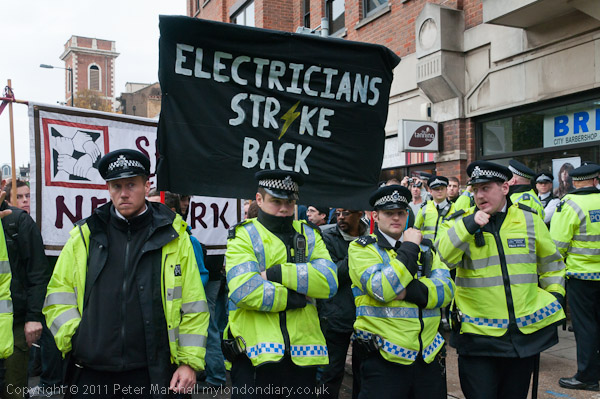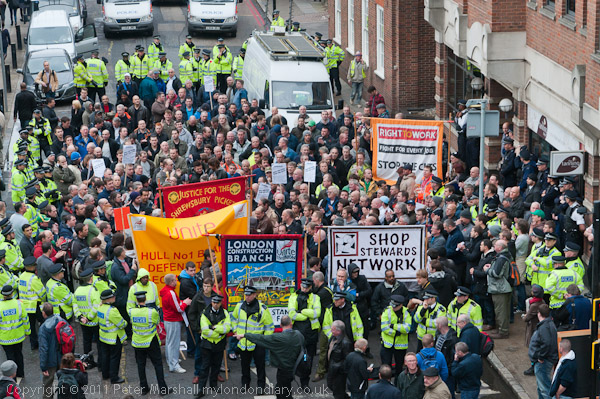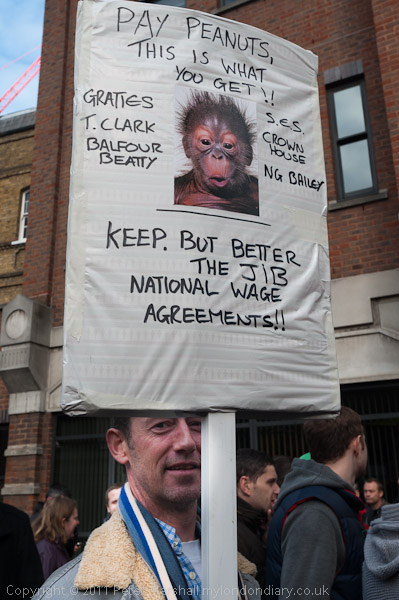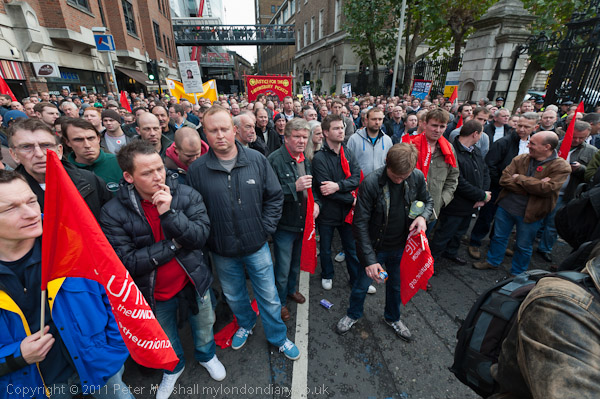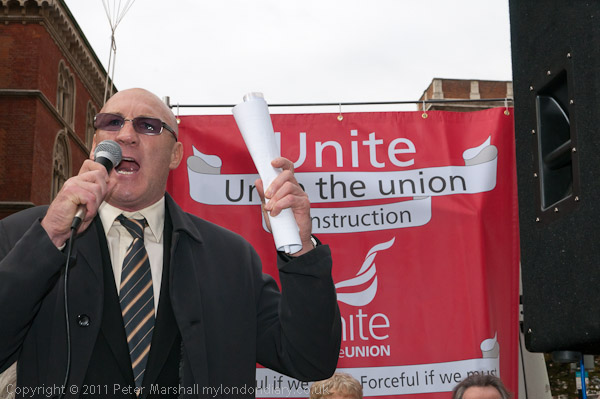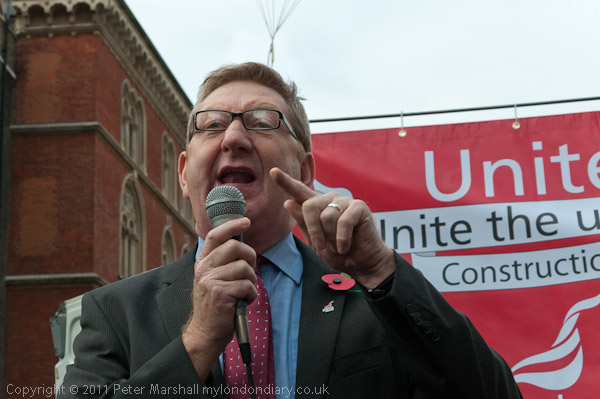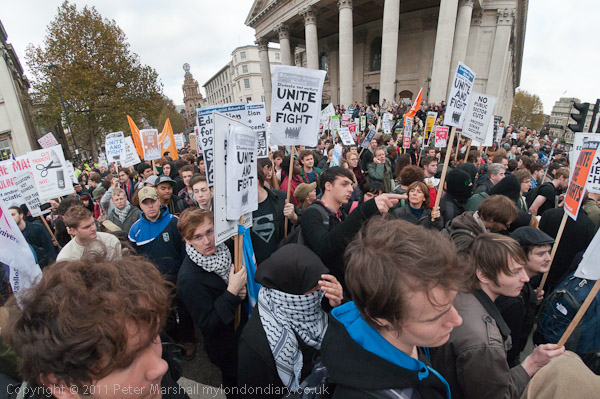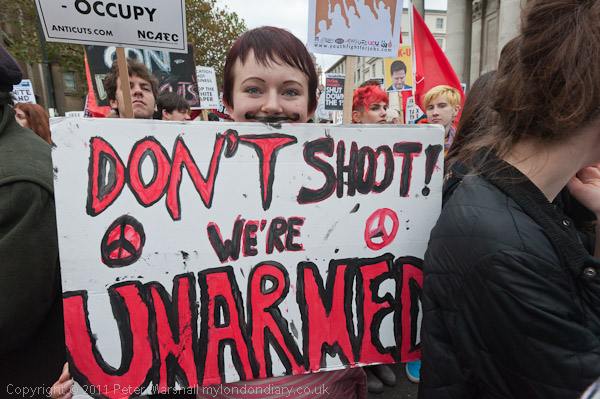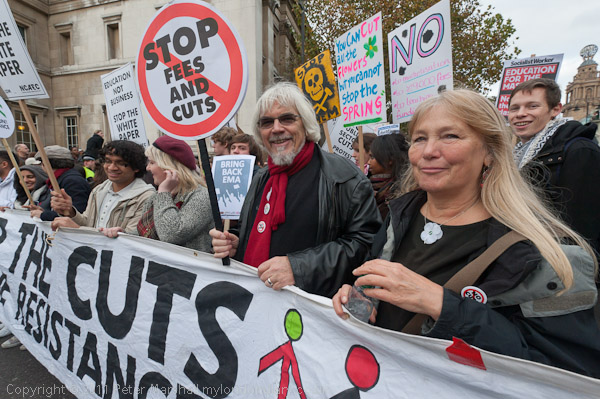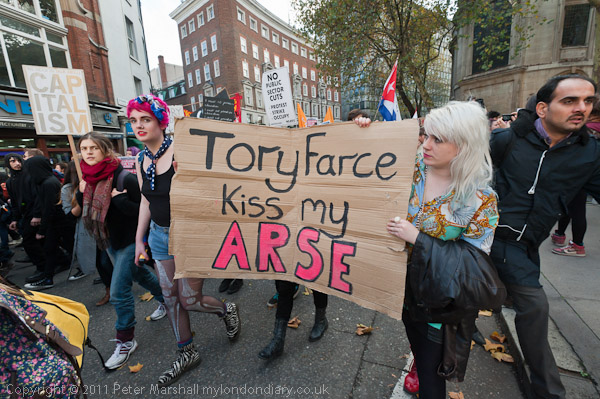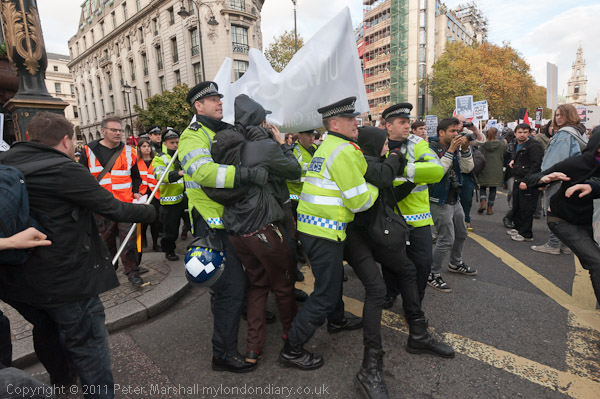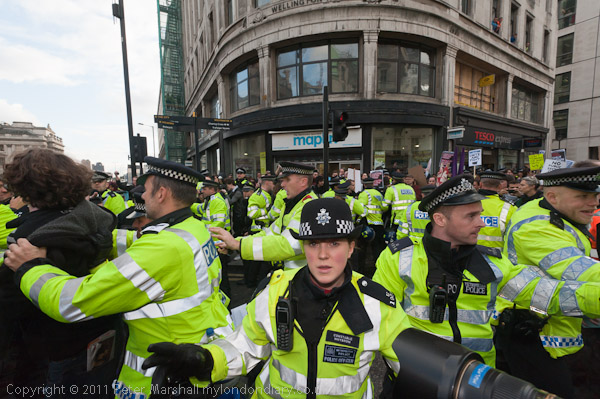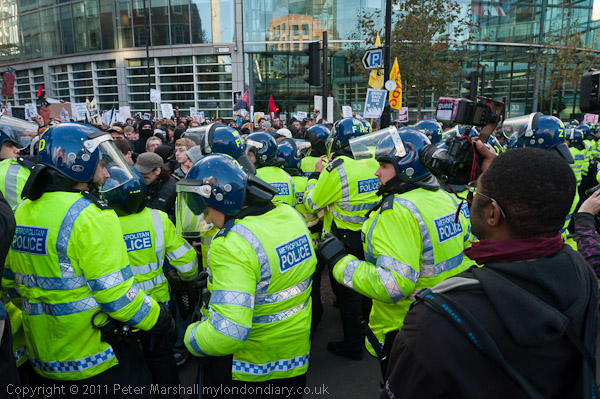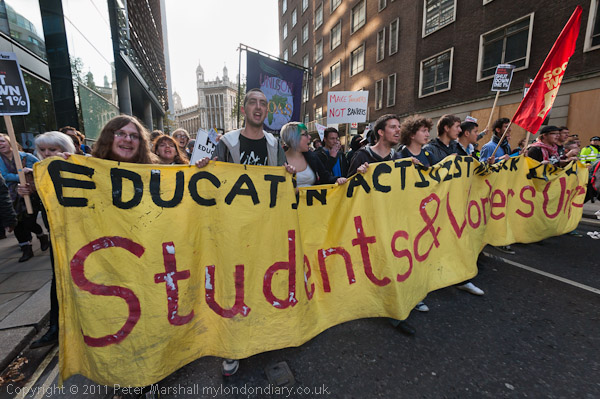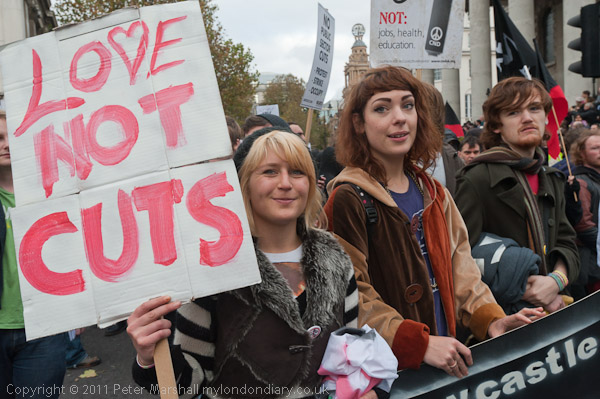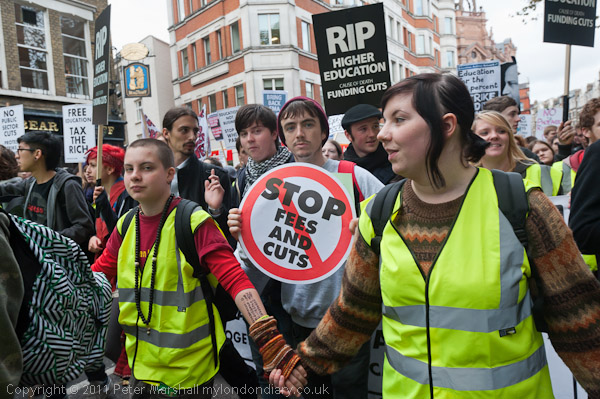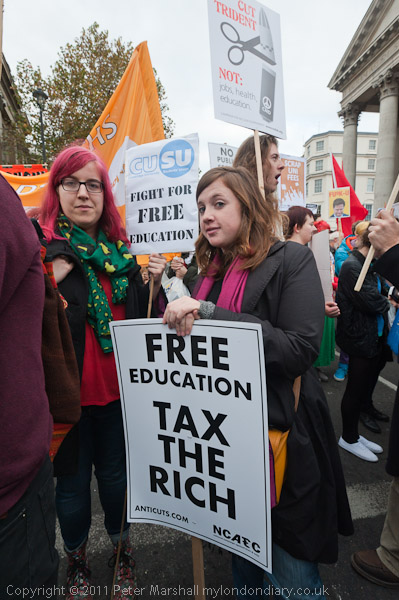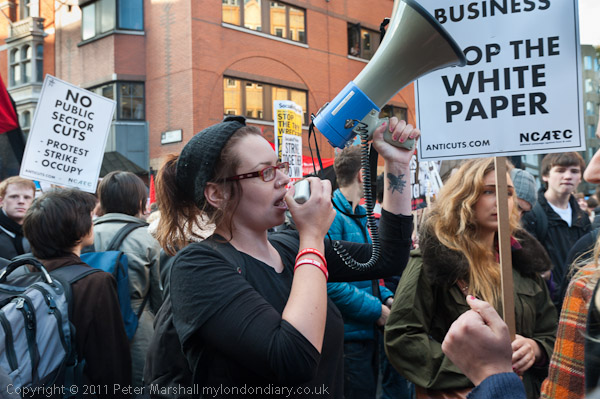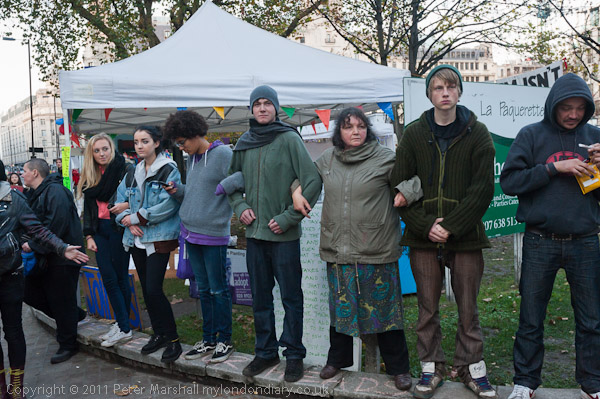Sack Parliament on Monday 9 October 2006 was more a demonstration by police of their determination to protect the status quo following protests earlier in the year and the continuing saga of the Parliament Square peace protest which had led to their performance being criticised by politicians and our largely right-wing press than any real protest by the few who had come to protest against the increasing restrictions on our freedom to protest.
It was Brian Haw’s permanent peace protest in Parliament Square which led to the Labour Government including in the Serious and Organised Crime and Police Act 2005 severe restrictions on the right to protest in a large area around Parliament and giving police new powers to control protests.
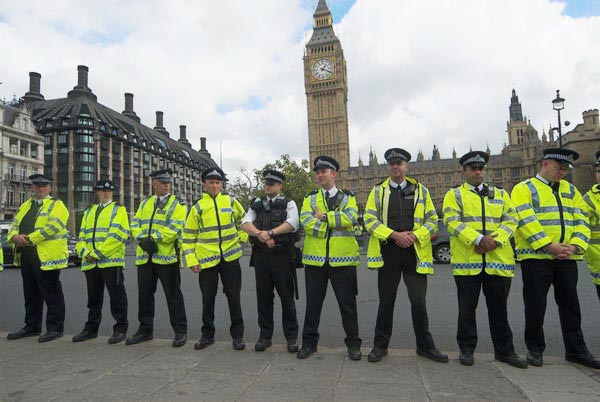
Media frenzy about this protest was whipped up in the days before at least in part by police briefings, and the police clearly saw this as an opportunity to demonstrate that they could control events such as this. I wrote and published an unusually long piece on My London Diary about the event – reproduced here with some minor corrections.
Sack Parliament on Monday 9, and event to mark the return of MPs to Westminster, was of course only ever an amusing idea rather than a serious chance of a Ukrainian-style Orange Revolution. As the large press turnout showed, it was one that had caught the attention of the media (Mondays perhaps tend to be slack) but unfortunately not that of the demonstrating classes.
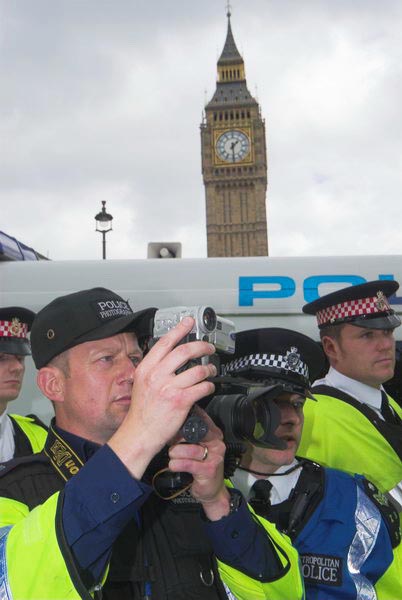
It got off to a bad start with the planned ‘Critical Mass’, which failed to gather more than a handful of cyclists. Heavily outnumbered by the police bike posse, they faded away, a couple cycling down the side of the National Theatre and the other 3 or 4 carrying their bikes up the steps to Waterloo Bridge.
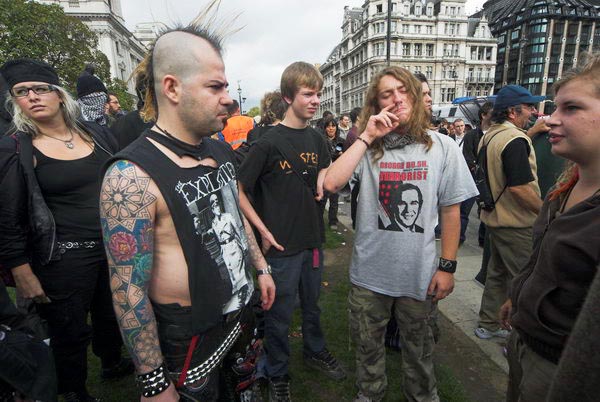
At Parliament Square, things were little better. At the advertised start time, apart from the normal Parliament Square Permanent Protest there were perhaps 25 demonstrators and rather more press, along with what must have been around a thousand police, counting those sitting in vans around the area as well as the impressive number standing around.
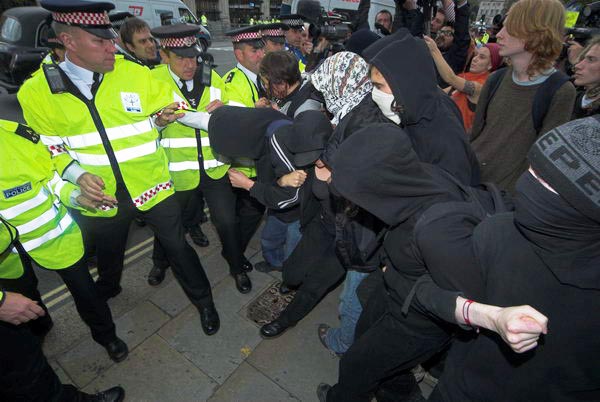
Twenty minutes later the numbers had been more than doubled, mainly by the arrival of a group dressed largely in black. And soon after they made a charge at the police line into the road towards the Houses of Parliament.
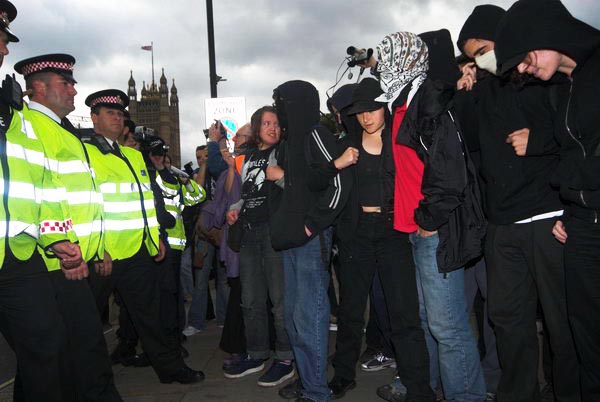
From the start it seemed a pointless gesture. The line held, and pushed them back, and soon the two sides were standing a few feet apart and glaring at each other. After a few more attempts to push through the police, the demonstrators ran back onto the grassed area of the square where they were surrounded by a cordon of police.
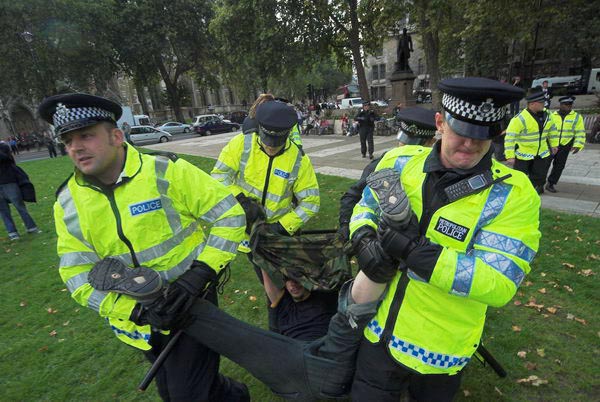
One of the photographers, an NUJ member I’d been talking to a few minutes earlier, was apparently pushed by police as they rushed the demonstrators. He fell and received a neck injury which left him with no feeling from the waist down. Police medics were on hand to give him first aid and to call an ambulance. Later I was pleased to hear he had been allowed home from hospital, and the injuries were apparently less serious than we feared.
I was inside the cordon to start with, but the police made no attempt to stop me as I decided to walk out, not even asking to see my press card (they had checked it earlier.) Around the square, small teams of police were rounding up anyone looking vaguely like a punk or a hippy and dragging them inside the cordon. Some of those they picked on seemed genuinely to have no connection with the protest. Eventually there were perhaps around 150 in there, including quite a few press, along with a few who clearly had little idea what the whole thing was about.

Apparently others who looked like possible demonstrators were stopped and arrested in Whitehall, or turned back on other roads approaching the square.
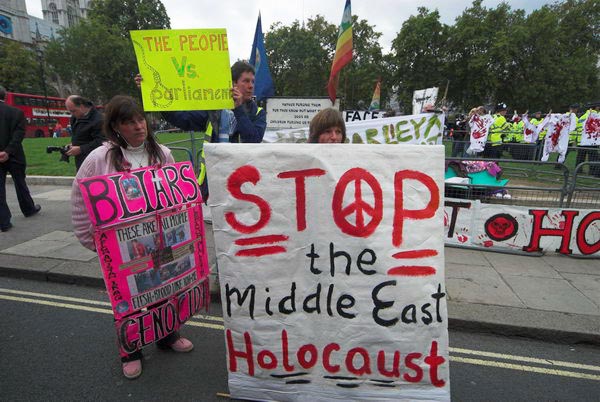
Outside the cordon, the normal demonstrations in the square went on, with the occasional interruptions by the police, nit-picking about where the demonstrators are allowed to stand and being largely ignored or abused.
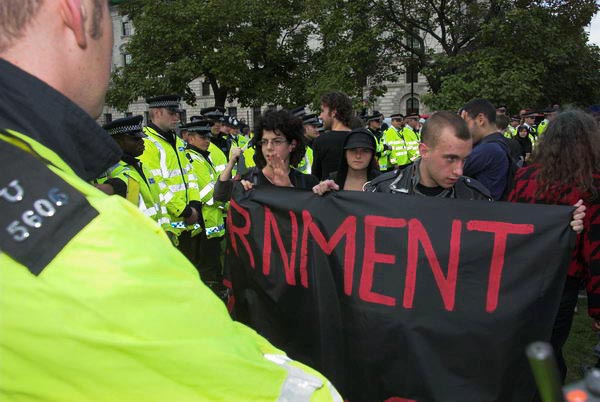
Occasionally there were scuffles inside the cordon as demonstrators made an attempt to breach the police line, or police teams moved in to grab individuals. There were also occasional arrests around the square, including some of those who protested loudly they were simply bystanders.
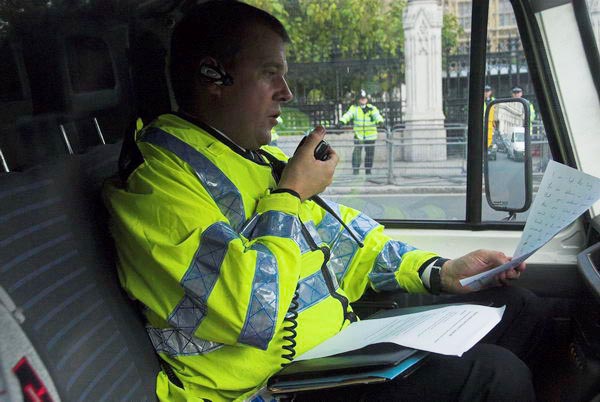
At 14.13, roughly 40 minutes after the protesters had been imprisoned in the cordon, Police Superintendent Peter Terry (responsible for the taking away and destruction of most of Brian Haw’s property from the square and alleged by demonstrators to have lied in court) read from a handwritten statement telling the protesters that they were being detained in the square because he believed that their continued presence in the area would lead to a serious breach of the peace!

Around 15.00, police began to distribute notices to those outside the cordon warning them “we believe that you may be, or are about to be, involved in a demonstration located within an area subject to the provisions of the Serious and Organised Crime and Police Act 2005” and moving press and spectators well back from the cordon. There seemed to be little chance of getting further photographs, so I went to get on with work elsewhere.

According to a press report later in the evening, there were 38 arrests made. Those caught in the cordon who were not arrested at the event were apparently required to provide evidence of identity and address before being allowed to leave. SOCPA continues to be a blot on human rights in this country, and this protest, despite its apparent pointlessness and lack of support has underlined this point.
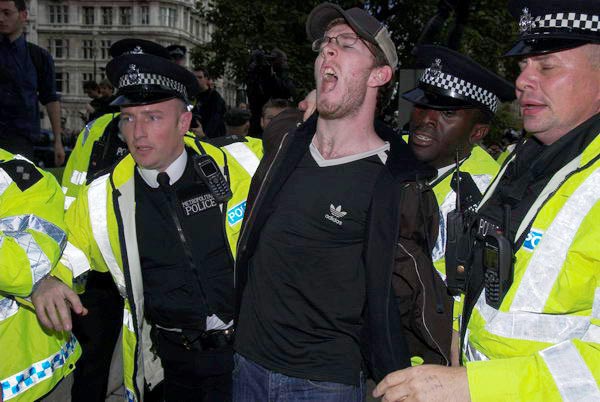
I’m one of a generation who grew up believing in British justice and a sense of fair play. We were rightly appalled at those countries where protest was banned, and demonstrators could be arrested. It sickens me to see this happening in front of what used to be a powerful symbol of freedom, the Houses of Parliament.
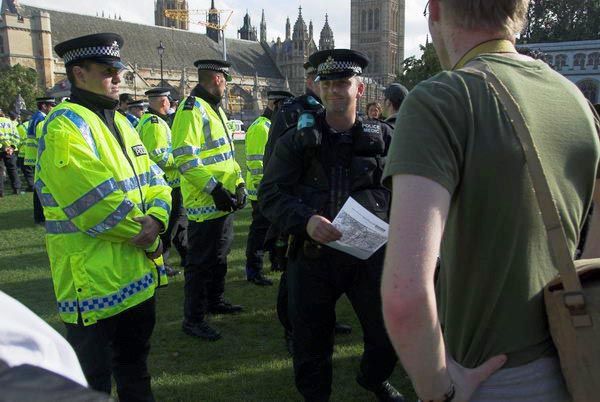
In 2007 the Labour Government, then led by Gordon Brown began a consultation about managing protest around Parliament which looked at different ways of imposing restrictions and those in SOCPA were repealed in the coalition’s by the Police Reform and Social Responsibility Act 2011. But they were replaced by giving police new powers to control a wide range of activities in the area.
Even more draconian powers allowing police to restrict protests across the UK cane into force under the Tory Police, Crime, Sentencing and Courts Act 2022 which seriously impact free expression, freedom of speech and the right to protest in the United Kingdom, and further powers and increased sentences for protesters were enacted by the Public Order Act 2023. We now have non-violent protesters serving lengthy jail sentences, with a Labour government which appears to be in no hurry to repeal these repressive police state laws.
More pictures on My London Dairy.
Flickr – Facebook – My London Diary – Hull Photos – Lea Valley – Paris
London’s Industrial Heritage – London Photos
All photographs on this page are copyright © Peter Marshall.
Contact me to buy prints or licence to reproduce.
